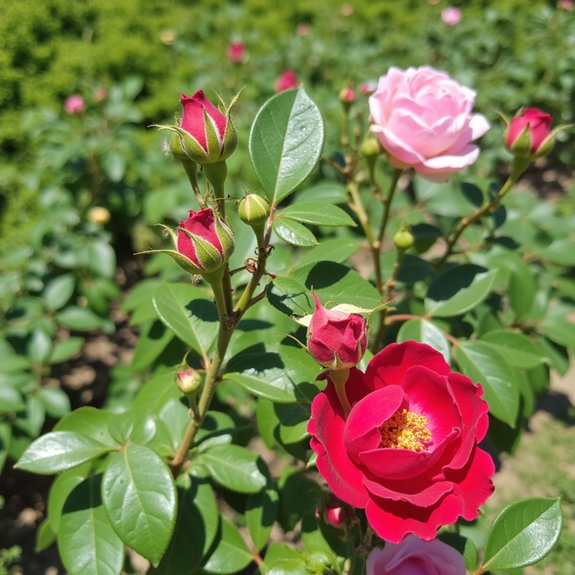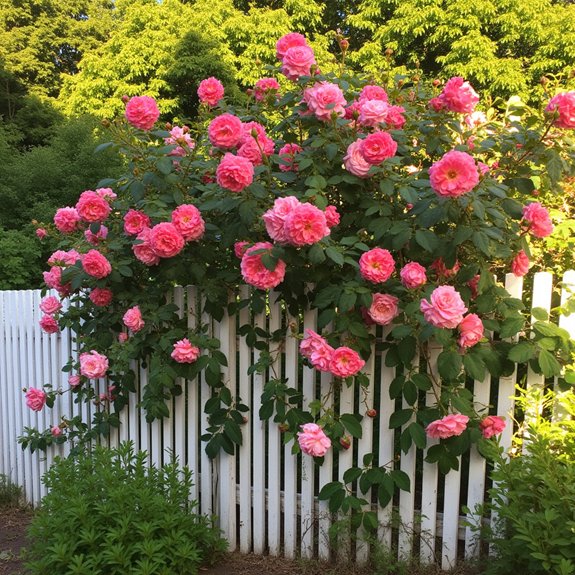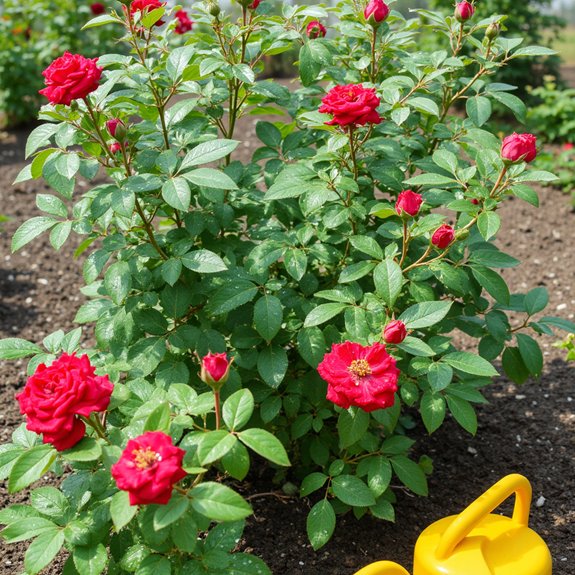You’ve probably watched roses grow at what feels like a snail’s pace, wondering if there’s a secret formula to speed things up. Most gardeners don’t realize that choosing the right variety can cut your waiting time from years to mere months. While traditional roses might take 2-3 seasons to establish, specific fast-growing cultivars can produce stunning blooms within 8-12 weeks of planting. The real game-changer isn’t just patience—it’s knowing which techniques actually work.
Contents
- 1 Understanding Rose Growth Cycles and Maturity Timelines
- 2 Essential Growing Conditions for Accelerated Development
- 3 Fast-Growing Rose Varieties That Deliver Quick Results
- 4 Choosing the Right Plant Size and Type for Immediate Impact
- 5 Optimal Care and Maintenance Practices for Rapid Growth
- 6 Propagation Methods: Seeds vs. Cuttings for Faster Blooms
- 7 Maximizing Lifespan Through Proper Selection and Root Systems
Understanding Rose Growth Cycles and Maturity Timelines

When you plant a new rose, it won’t reach its full potential overnight. Understanding growth timelines helps set realistic expectations for your garden. First-year blooms typically appear underwhelming compared to what’s coming later.
Rose maturity stages follow a predictable pattern. Year one focuses on root establishment, especially with bare-root plants. Potted roses often bloom immediately but still need time to settle. By year two, you’ll notice improved flower quality and increased blooming frequency.
Full maturity arrives in years three to four. That’s when your roses display their true character, producing abundant, vibrant blooms throughout multiple flushes from spring to fall.
Essential Growing Conditions for Accelerated Development
Sunlight serves as your roses’ primary fuel source, and they’ll demand 6-8 hours of direct sunlight daily for peak performance. Without adequate sunlight exposure, your roses won’t develop properly or bloom consistently.
Soil composition directly impacts growth speed. Well-drained soil prevents root rot, while heavy clay soils slow development. Amend your soil with sand or perlite to improve drainage and encourage faster root establishment.
Space matters too. Plant roses with adequate room between them to eliminate root competition, which slows growth considerably. Proper spacing ensures each plant receives maximum nutrients and water for accelerated development.
Fast-Growing Rose Varieties That Deliver Quick Results

While proper growing conditions set the foundation, selecting the right rose variety can dramatically reduce your wait time for spectacular blooms. Fast varieties like ‘New Dawn’ reach maturity quickly, stretching 10-15 feet while delivering consistent bloom frequency throughout the season. ‘The Fairy’ offers compact growth at 2-4 feet, producing masses of small pink doubles. For dramatic results, choose ‘Ramblin Red,’ which can surge up to 10 feet in a single season with stunning red flowers. Species roses and vigorous cultivars consistently outpace hybrid varieties, giving you impressive displays in just one growing season rather than waiting years.
Choosing the Right Plant Size and Type for Immediate Impact
Since immediate gratification matters more than long-term planning for many gardeners, you’ll want to start with larger, established plants rather than tiny seedlings. Plant size directly impacts your blooming timeline—potted roses in one-gallon containers or larger often bloom immediately after planting, while bare-root varieties focus energy on establishing roots first.
Your type selection matters equally. Choose potted roses over bare-root options for instant results. Look for healthy specimens with uniform green canes, plump white roots, and no disease signs. Larger containers mean more developed root systems, translating to faster establishment and quicker blooms in your garden.
Optimal Care and Maintenance Practices for Rapid Growth

Once you’ve selected the right plant, proper care becomes your fastest route to impressive blooms. Water consistently during the first year, but avoid drowning your roses. Feed them three times annually with balanced fertilizer for ideal growth spurts.
Soil amendments work wonders for drainage and nutrition. Mix sand or perlite into heavy clay soils, creating the well-draining environment roses crave. This simple step prevents root rot while encouraging vigorous development.
Pest management protects your investment from day one. Monitor regularly for aphids, black spot, and powdery mildew. Quick intervention saves energy your rose would waste fighting problems, redirecting it toward spectacular blooms instead.
Propagation Methods: Seeds vs. Cuttings for Faster Blooms
When you’re enthusiastic for roses, propagation method makes all the difference in reaching bloom goals. Seeds require patience, taking weeks to six months for germination, with seed viability demanding cold stratification first. You’ll wait up to a year for blooms from seedlings.
Cuttings offer faster results through proven cutting techniques. Take 6-8 inch sections below leaf nodes, then root them in 3-6 weeks. Some cuttings bloom within their first year, making this method superior for quick gratification.
Choose cuttings over seeds when speed matters, you’ll enjoy roses much sooner with less hassle.
Maximizing Lifespan Through Proper Selection and Root Systems
While propagation gets your roses started, selecting the right variety and root system determines whether they’ll thrive for decades or disappoint within years. Your selection criteria should prioritize root health above flashy blooms. Own-root roses typically outlive grafted varieties, lasting 30-50 years compared to 10-15 years.
When buying, examine roots carefully. Look for plump, white roots without dark spots or mushy areas. Species roses and vigorous shrub varieties offer superior longevity over delicate hybrids. Choose 1-gallon or larger potted plants with uniform green canes.
